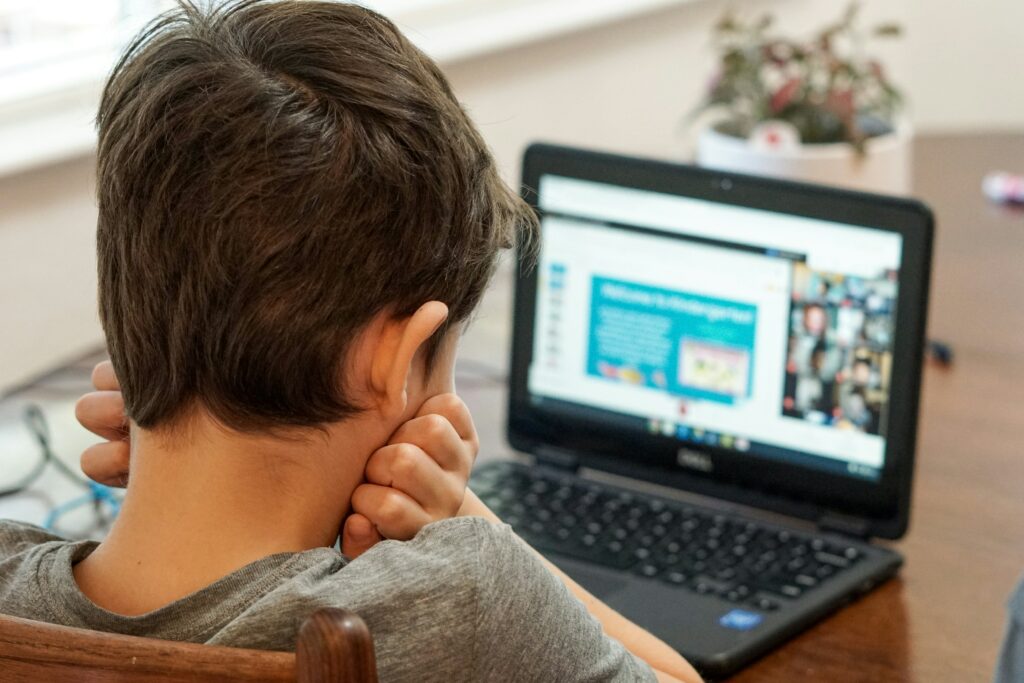Pedagogy is the methodology of teaching. It is the way a subject is taught. A teacher’s pedagogy does not always fit a student. Looking at the learning theory of Behaviourism, it focuses on objectivity; therefore it excludes topics like human feelings (Bates, 2014). This may fit some students, but others require the acknowledgment of emotions to feel engaged in their studies. Personally, the mix of Behaviourism and Cognitivism has helped me as a learner. Behaviourism trains students by a response and external stimuli; Cognitivism allows students to construct a mental map of subjects to gain knowledge (Bates, 2014). I find combining both aspects allows for better engagement; resulting in effective learning.
Networked Pedagogy
Networked pedagogy is a learning approach that uses technology in order to connect to people who would not have those resources otherwise.
Networked pedagogy removes the barriers of communication in (1) time and (2) distance.
One example of the contributions that online connection has made to my education is through art class. A discussion board is an effective way for students to critique student art. I found it allows students to think deeply about their responses while having easy access to the artist’s work.
Learning Theories
Cognitivism resonates with me because I find that the way you structure your study habits is important when retaining information. Cognitivism can be applied in online learning by creating a visualization with the goal of comprehending the topic (Bates, 2014).

Cognitivism shows that learning must be done with purpose. Some things to apply in your learning environment are:
- Planning out your study sessions – what subjects should you focus on?
- Simplifying and organizing the subject – what subjects can be broken down in subtopics?
These following actions and questions can maximize your learning results.
Instructor Roles
The instructor is the guide of the students. They are the ones who set the learning environment for the class. An instructor must have the following qualities:
- Interactivity – Must be available for feedback
- Facilitator – Guides the class actively
In the past, the successful instructors were (1) easy to reach out to, (2) provided helpful feedback, and (3) created a welcoming community (Barnes, 2016).
Digital Spaces
My experiences in digital spaces are in online learning and social media. The benefits of learning in a digital environment are:
- Accessibility – the learning environment is portable, and usually used by a personal computer
- Affordable – the majority of the time it costs less than the in-person learning

With the following challenges of learning in a digital environment being…
- Accountability – the student will have fewer interactions with the teacher
- Guidance – having discipline is essential when learning digitally because the teacher will not be able to guide you in real-time
Contributing positively to digital communities is in large part connected to digital literacy. Good digital literacy allows a person to communicate effectively online (Blue, 2022). If a student does not know how to navigate the internet, then they may also share resources that can be detrimental to the community.
Resources
Blue, J. (2022, April 07). Development of skills in Digital Literacy is crucial in helping students become lifelong learners. To help you understand what this involves, we have carried out extensive research to produce a Digital Literacy introductory guide for teachers and educational managers. Cambridge University Press. https://www.cambridge.org/elt/blog/2022/04/07/understanding-developing-digital-literacy/
Bates, T. (2014, July 29). Learning theories and online learning. Tony Bates. https://www.tonybates.ca/2014/07/29/learning-theories-and-online-learning/
Barnes, C.L. (2016). Humanizing Online Teaching and Learning. Whitney Kilgore. https://pressbooks.pub/humanmooc/chapter/wheres-the-teacher-defining-the-role-of-instructor-presence-in-social-presence-and-cognition-in-online-education/
Bayne, S., Evans, P., Ewins, R., Knox, J., & Lamb, J. (2020). The manifesto for teaching online. MIT Press. https://ebookcentral-proquest-com.ezproxy.library.uvic.ca/lib/uvic/reader.action?docID=6317960&ppg=91
